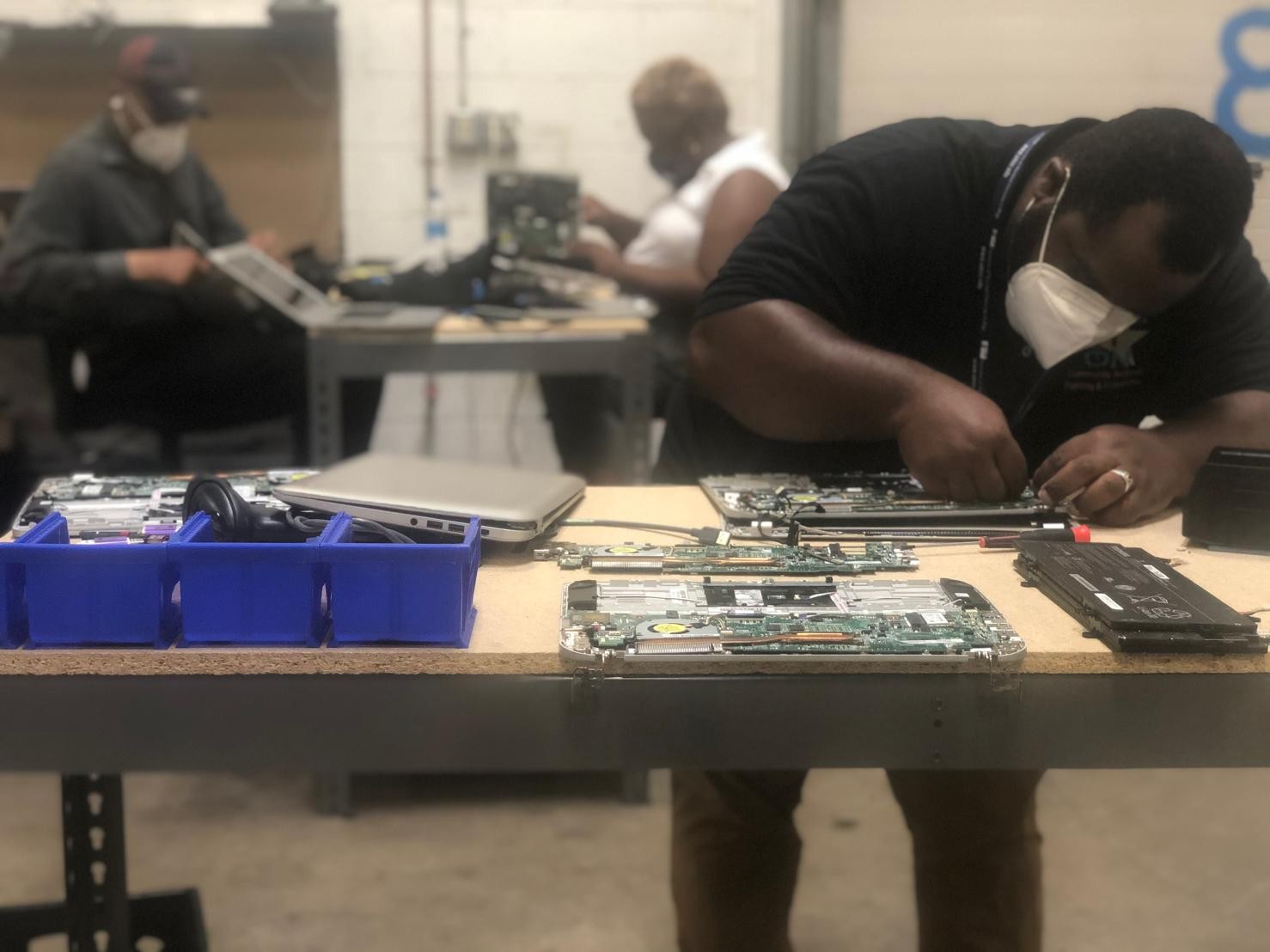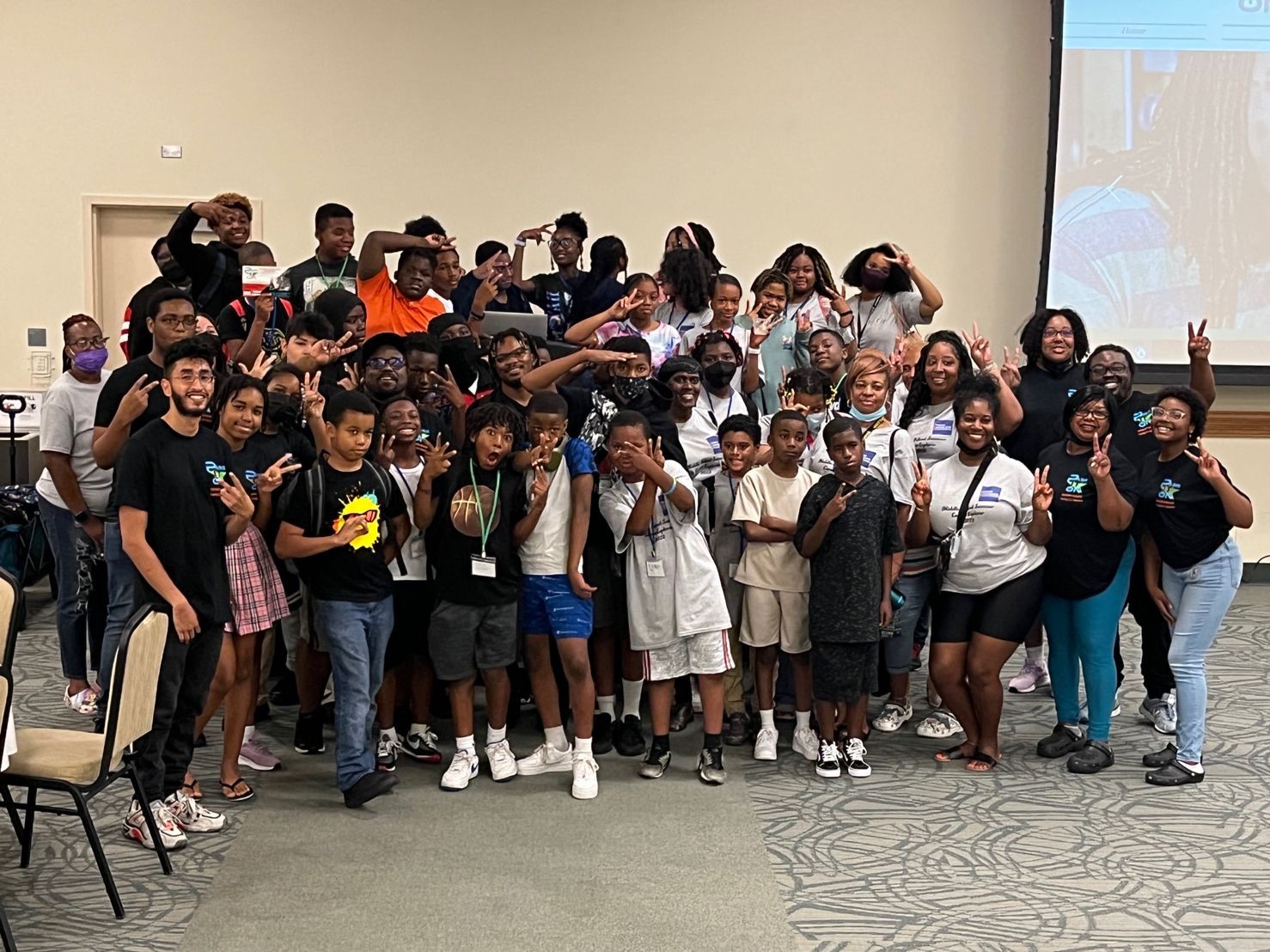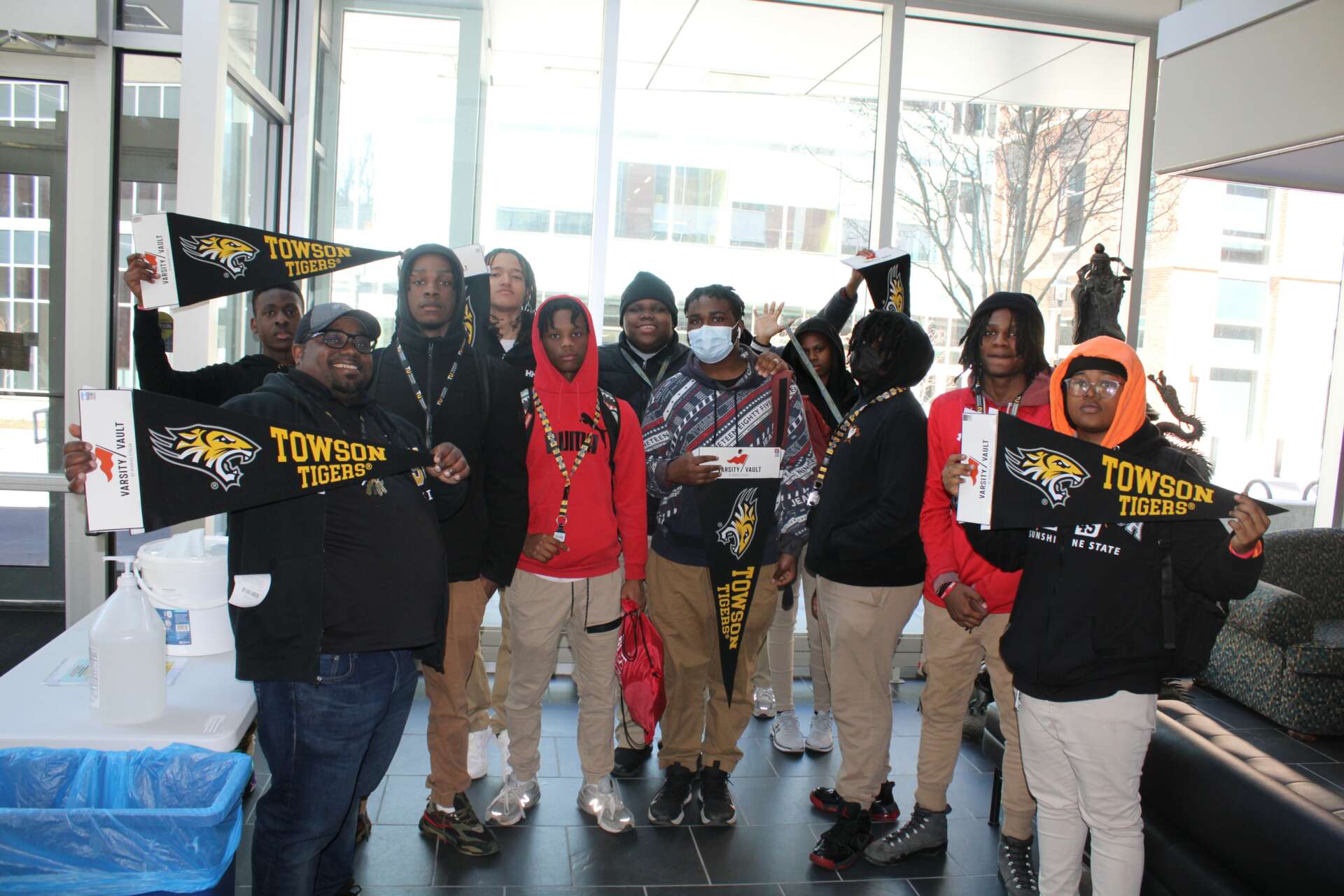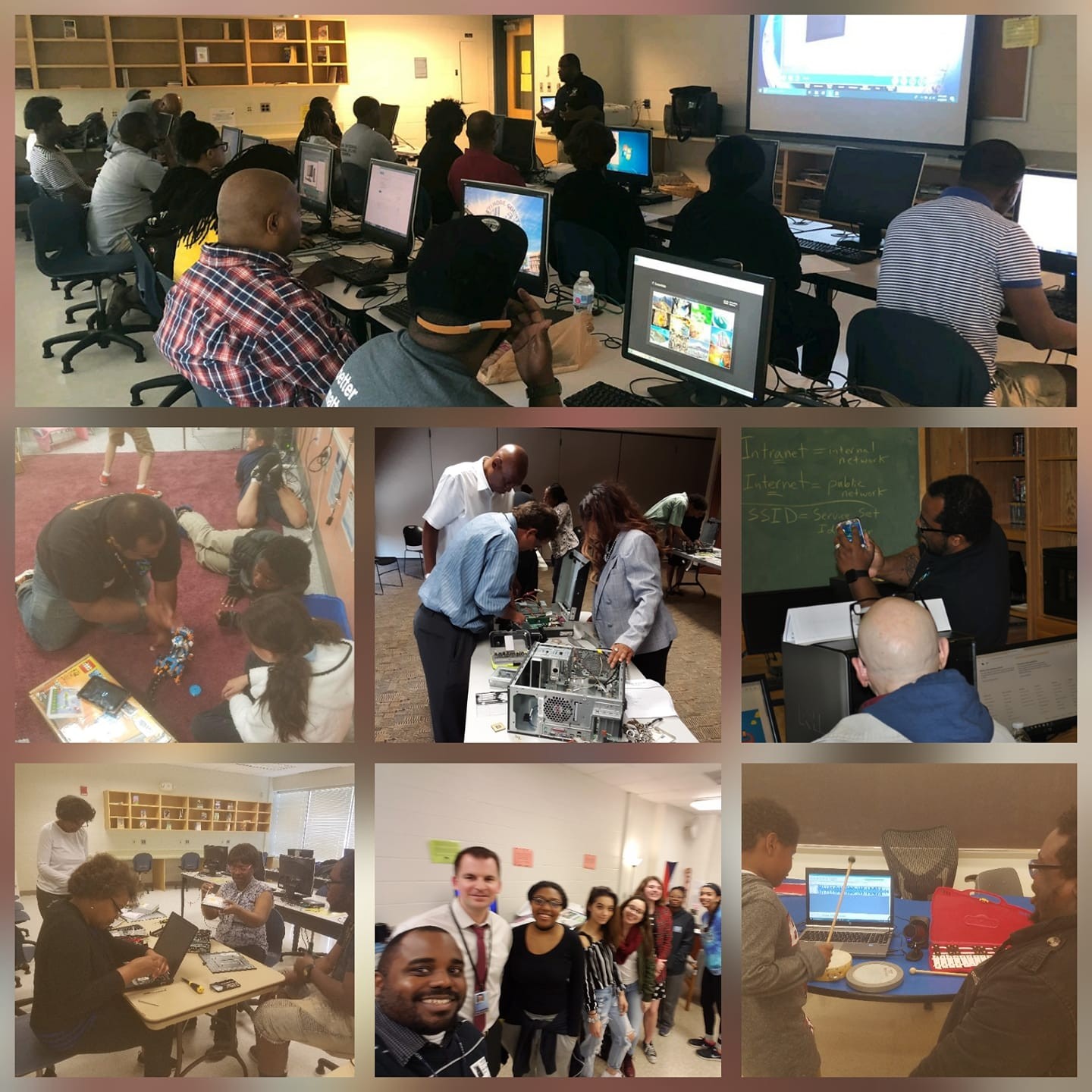We were lucky to catch up with Willie Sanders Jr recently and have shared our conversation below.
Willie, looking forward to hearing all of your stories today. So, let’s start with a hypothetical – what would you change about the educational system?
In my opinion educational system, like most large public institutions, is slow in adopting change. As a result, our rapidly changing society is leaving the old way of educating students in the dust. Modern youth and adults can’t be taught and trained the same way the were 100 years ago….or even 25 years ago. To connect with learners and truly engage with them we have to evolve our teaching practices so that they align with the things that engage and inspire the learners of this era. This is especially true if you’re a technology educator like me.

Great, appreciate you sharing that with us. Before we ask you to share more of your insights, can you take a moment to introduce yourself and how you got to where you are today to our readers.
I’m Dr. Willie Sanders, Jr. and I’m a college dropout turned college professor at Towson University (the same college I dropped out of). I was able to make that 180-degree turn-around through technology education, specifically Information Technology (IT). In 2015, I decided that I wanted to help other people turn their lives around through education and careers in IT, so I founded Pass IT On – Community Technical Training & IT Solutions.
Pass IT On is a nonprofit whose mission is to close the technology skills gap experienced by youth and adults from disadvantaged and under-represented communities and backgrounds. To achieve this mission we seek out and partner with businesses, community-based organizations, and educational institutions to provide their members with technology curriculum, training, mentoring, and technical support. We also provide youth with STEM-related training and enrichment to help foster their interest in the Information Sciences. Despite being a small nonprofit, we have been able to touch the lives of thousands of people throughout Baltimore City and the surrounding region. Our focus on partnering with others to tackle the great disparities in the city has also enabled us to work with larger institutions like the University of Maryland Medical Center (UMMC) and Baltimore City Public Schools to share our technical training expertise with the communities they serve.
We know that the goal we’re trying to accomplish can’t be conquered alone. So we’re always seeking out new and innovative collaborations. We also operate as a nonprofit social enterprise, a nonprofit that runs like a business to generate revenue for our community outreach. This gives us the flexibility to meet people where they are and to provide services that other organizations, that do similar work, can’t.

Can you talk to us about how your funded your business?
Like most companies, In 2005 the concept of Pass IT On started as an idea jotted down in a notebook. At the time, I had got back on track after dropping out of 4-year college and I was working for the YMCA of Central Maryland to pay my way through community college where I was studying Computer Networking. I’ve always been good with kids but as I learned more about technology I also became really good at communicating technical concepts to them. So I thought that having an organization that did that could be really beneficial. It’s something I wished I had had when I was growing up. In 2011, while working for Prince George’s County Public Schools as an after-school program’s assistant director, I pitched the idea (via email) to several elementary school principals as an afterschool technology program. I never received a response back from any of them, including from the principal of the school where I worked.
This is when I first realized that if I wanted Pass IT On to become a reality it was going to require an investment. At that point in my life, the best investment I could make was an investment in myself. I knew Pass IT On was a good idea. So why was it rejected? It wasn’t the idea they rejected and ignored, it was the person offering up the idea. In their eyes, I was just some kid in a community college. How could I possibly be knowledgeable enough to teach their young people? So, for 10 years I set that notebook on the shelf and instead focused on my self-investment plan centered on a set of short-term, mid-term, and long-term goals to increase my formal education, technical certifications, industry experience, and youth work experience. By 2015, I had achieved many of those goals. I held multiple industry-recognized IT certifications, I earned my Associate’s Degree in Computer Networking from PG Community College and a Bachelor’s Degree in Information Technology from the University of Maryland, University College (now UMGC). I also gained 8 years of experience in the IT field as both a practitioner and educator. I worked for several years on contract at the Internal Revenue Service (IRS) National Headquarters and for Baltimore City Public Schools and Anne Arundel Community College teaching Computer Networking and IT.
After this significant investment of time and money in myself. I found that people started to seek me out for advice and training. At first, I just started helping people in my spare time. It wasn’t a business. It was me carving out a few hours a week to coach relatives, friends, and friends of friends on how to break into IT. As the demand grew, I realized that there was a bigger need than I could handle on my own. So I invested about $400 to purchase a prepaid cellphone and to get a paid web hosting subscription on Wix.com. I then dusted on that plan from 2005 (and updated it a bit) and Pass IT On was born. During the first few years, I funded Pass IT On out of pocket to the tune of $5,000 – $10,000 a year. It was my passion project! But as I have learned more about the business aspects of running a nonprofit and as more people have seen how important the work we’re doing is, they’ve begun to invest in us as well.
All this to say, if you’re just getting started in your non-profit or for-profit venture. Sometimes the best investment you can make is an investment in yourself! “Rising tides lift all boats” meaning that as you begin to lift yourself to the next level through self-improvement, preparation, and education, you will likely see your ventures rise as well.

Can you open up about a time when you had a really close call with the business?
Although Pass IT On currently has 30 team members and volunteers, were still a small nonprofit budget-wise. So like many small nonprofits, we operate on a shoestring budget. Over the years we’ve had many close calls and almost missed payrolls. It can be pretty stressful! There’s been several times that I’ve had to cover payroll on my personal credit card and the reason that I and many of my Directors have careers outside of Pass IT On. To compound this stress, in the nonprofit world, it’s hard to find funders to back you when you don’t have a moderate to large budget already. When we were brand new, we actually had a funder tell us, “We can’t fund you unless your budget is at least $100,000”. So essentially, unless you already have money to fund your outreach you can’t get help to fund your outreach. I find this to be a bit alarming considering that 75% of nonprofits in the US have budgets of under $100K with 55% of them not being required to report to the IRS, meaning they have annual budgets under $60K (National Council of Nonprofit, 2019).
This is the primary reason that Pass IT On operates using the “Social Enterprise” business model. A social enterprise or social business is a business that has specific social objectives as it core reason for existing as opposed to solely existing to make a profit. Social enterprises seek to maximize profits instead to benefit society by using those profits to fund social programs. We decided that our work is too important sit back and wait for funds to be granted to us and instead we determined that our skills as technical trainers and IT \Cybersecurity professionals could be leveraged to generate revenue for the organization and its programs. As a result, we have developed fee-for-service training partnerships for companies and other workforce training organizations. We provide low-cost, fee-based IT services for nonprofits and small businesses. We even began to write technical books, all to bring in funding for the organization.
Currently, 80% of our revenue is generated by fee for services activity. So although we do receive small grants and corporate donations, we take pride in knowing that our mission will move forward regardless of external funders. This allows us to approach partnership on a more even footing. And when funds get tight, my team and I know that all it takes is us to stay on our grind and Pass IT On will keep moving forward to serve the people of Baltimore City and beyond.

Contact Info:
- Website: https://www.passitonmd.org
- Instagram: https://www.instagram.com/passitonmd/
- Facebook: https://www.facebook.com/PassITOnMD
- Linkedin: https://www.linkedin.com/company/pass-it-on-inc-community-technical-training
- Youtube: https://www.youtube.com/channel/UCSn-42PRz6RSysgxUJbrsuA


